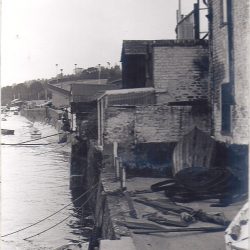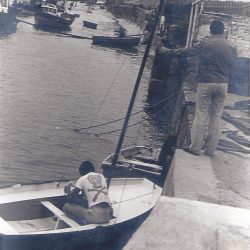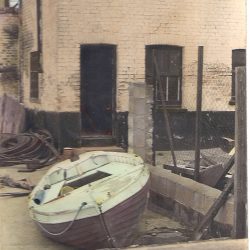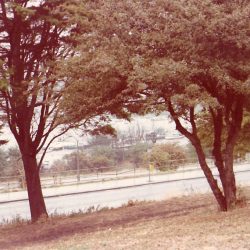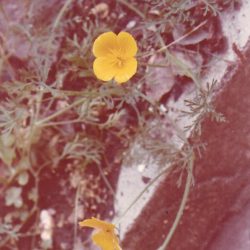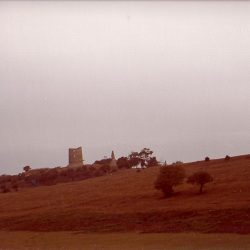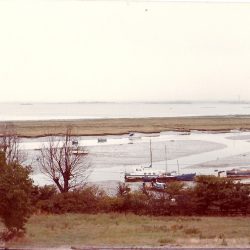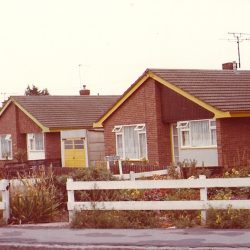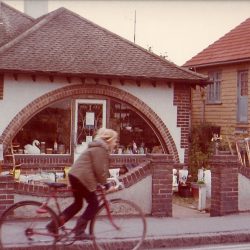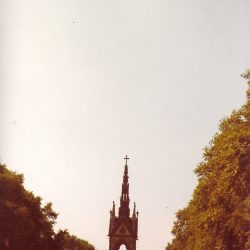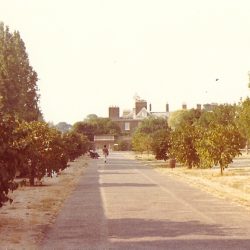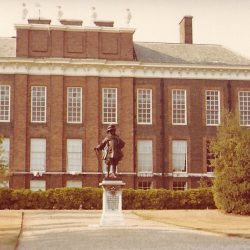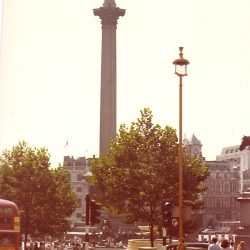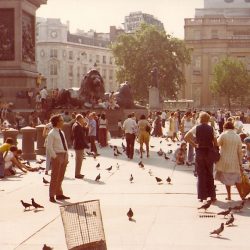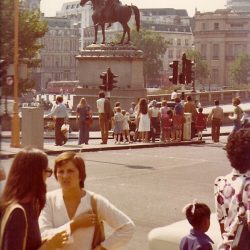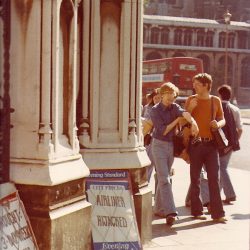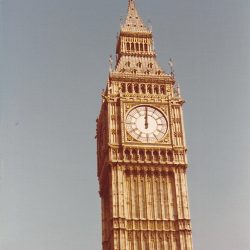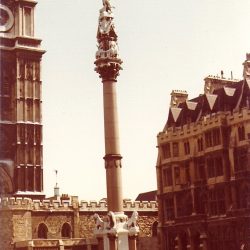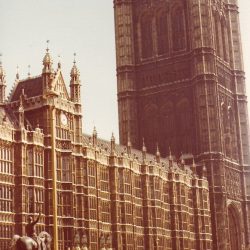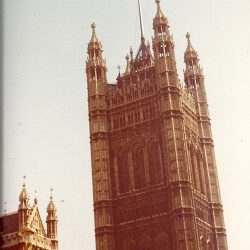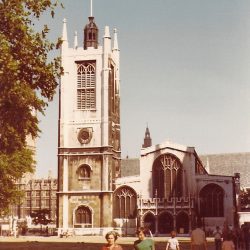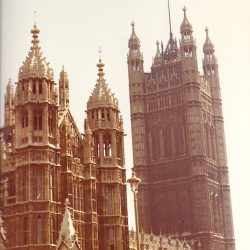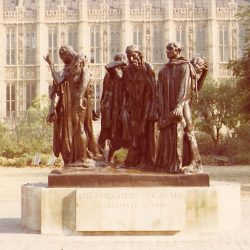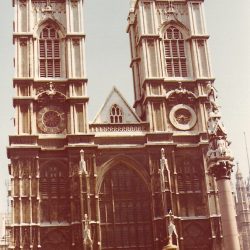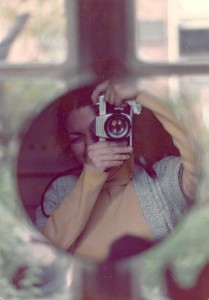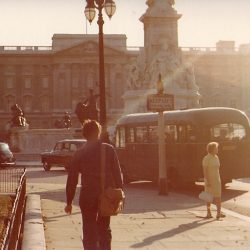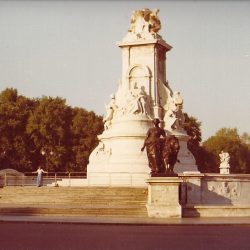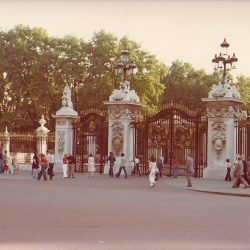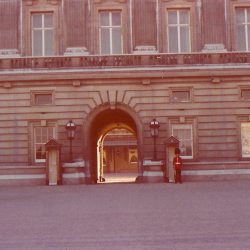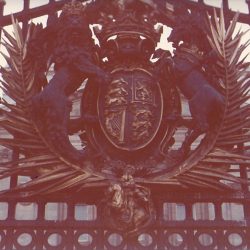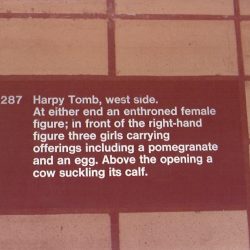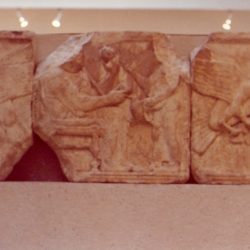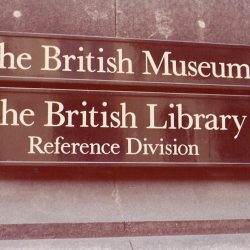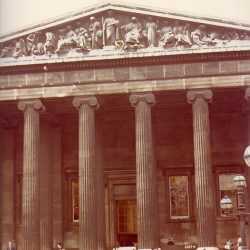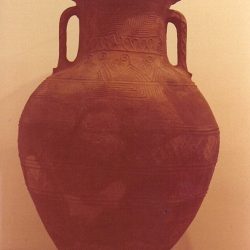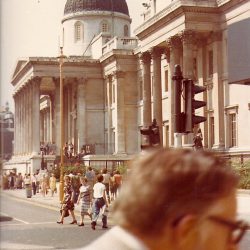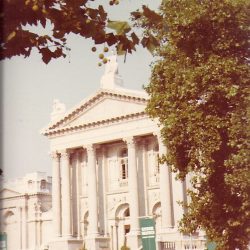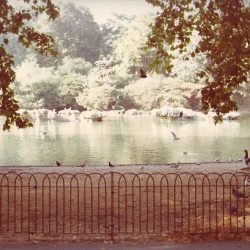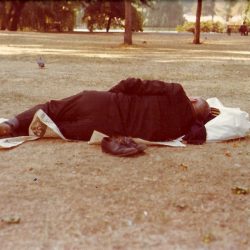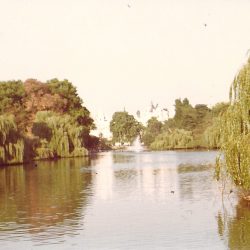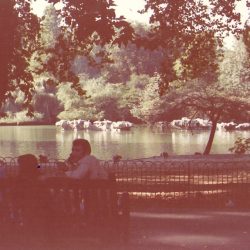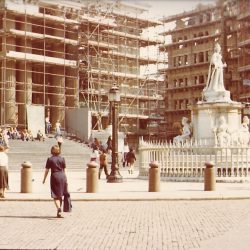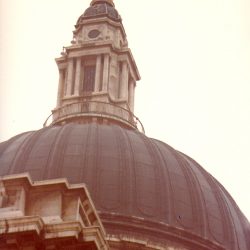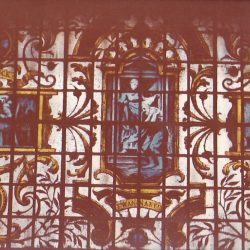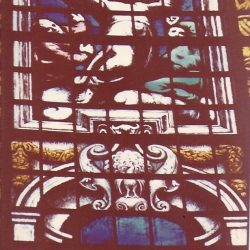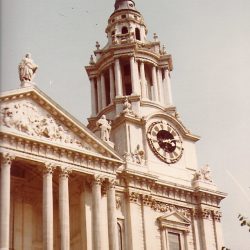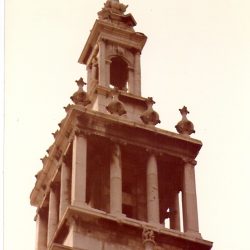After a week or so in London, I left my friends and went to Leigh-on-Sea to see my relatives (some of whom lived in nearby Southend-On-Sea, too). Leigh was (and probably still is) the real England from my point of view . The surrounding countryside was rather dreary-looking back then although I got excited when I saw a ruin.
There was a board walk (with shops) in the town because the Thames River flows as far as Leigh. We never spent a day at the beach – none of our days spent there were sunny enough in spite of the drought. The boats along the river lent an air of quaintness to the area.
The house my relatives bought was probably typical for the times and of the British working class. The room where you bathed and the room where you went to the toilet were two different rooms. (Living now in a house with one all-inclusive bathroom, that makes more sense because two people can do what they have to do at the same time as long as the first person has to bathe and the second person goes to the bathroom.) I can’t remember if there was a bidet but there could have been because bidets are popular in Europe.
My cousin and I ate fish and chips at a small shop that served them on a newspaper (saves on washing dishes) although I usually ate my aunt’s home-cooking which was delicious and reminded me of my life in the village. My cousin’s boyfriend drove us to a night spot one night in his car but otherwise we took the bus or walked wherever we went. It didn’t take long to walk to a shop or the boardwalk. The locals who worked in London traveled by commuter train or by bus (one was faster and the other was cheaper).
I also met my two other aunts, uncle and their children, relatives I had never met before. My traveling companions came to visit us for a few days, too. When it was time, we left from there for Gatwick Airport (Our plane couldn’t depart as scheduled so we stopped briefly at Brighton; our the airline company had to take us somewhere.).
At one point, it finally rained. Actually, it was a thunderstorm as I recall.
Copy and paste the links below into your browser:
www.leigh-on-sea.com
http://en.wikipedia.org/wiki/Leigh-on-Sea

